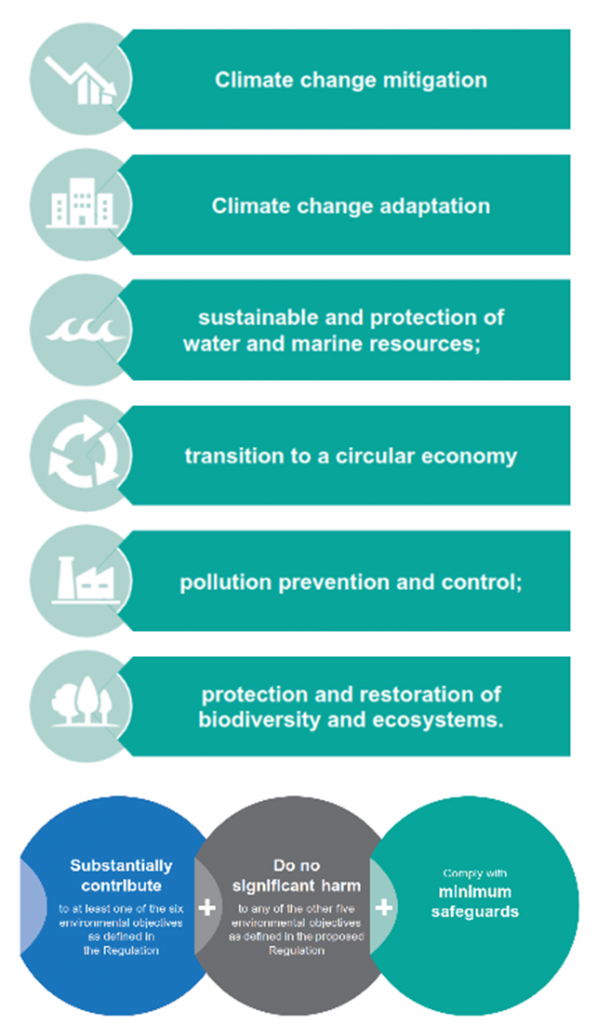AUTHOR: Vincenzo Binetti
TUTORS: Tutor accademico: Ing. Pietro Crespi – Tutor aziendale: Ing. Mattia Mariani
INTERNSHIP: Deerns Italia
MASTER: Master in “Edifici e infrastrutture sostenibili” a.a 2019/20
Per far parte di un fondo che emette azioni green, secondo la Tassonomia, l’immobile che viene acquistato deve essere green al momento dell’ingresso ovvero entro tre anni, per consentire che la traiettoria del fondo vada verso la diminuzione delle emissioni di CO2. Ciò apre uno scenario di certificazione volontaria ambientale degli immobili legata alla decisione dei fondi di emettere azioni green.
L’oggetto della presente tesi tratta gli studi di conformità alla taxonomy EU di un pacchetto immobili, condotti dalla società di ingegneria Deerns Italia presso cui è stato svolto il tirocinio curriculare.
Tale analisi è stata richiesta dal cliente in merito agli energy audit commissionati parallelamente sugli stessi fabbricati. La Taxonomy EU rappresenta, ad oggi, il primo vero sforzo normativo che tenta concretamente di raggiungere gli obiettivi di riduzione delle emissioni di CO2.
Affinchè ciò avvenga è indispensabile che tutti i proprietari di immobili vengano incoraggiati e favoriti nell’obiettivo di ridurre volontariamente i GHG prodotti dai propri portafogli o asset immobiliari, per far sì che, secondo i canoni della tassonomia, questi asset abbiano le caratteristiche necessarie per entrare in un fondo green.
Il presente lavoro di tesi testimonia l’esigenza di un protagonista del mercato immobiliare nazionale ed europeo di valutare la conformità dei propri asset ai requisiti della Taxonomy EU.
La criticità emersa, il cui presente lavoro ha cercato di risolvere, è quella della difficoltà di raffrontare un asset generico con il 15% più performante dello stock nazionale esistente.
La necessità è quella di individuare un database di informazioni attendibile basato sulle metriche energetiche (EP) indicate dalla Taxonomy EU.
Lo strumento di benchmarking ivi proposto è quello del Rapporto Annuale 2020 – Certificazione energetica degli Edifici, fornito da ENEA e dal CTI.
Nel caso specifico, è risultato che l’intero gruppo di immobili analizzato fosse dotato di EPC non compatibile con quelli contenuti nel suddetto rapporto, a causa di metodologia di calcolo obsoleta (D.M.26/06/2009).
Il presente studio ha individuato in ENERGY STAR Portfolio Manager uno strumento alternativo per confrontare l’edificio oggetto di studio con uno stock di edifici simili per tipologia.
Tale strumento ha permesso di condurre compiutamente l’analisi di compatibilità alle richieste della Taxonomy EU sul pacchetto di immobili commissionato.
FOR INTERNATIONALSTUDENTS:
The European Commission’s Action Plan on Sustainable Finance aims to direct capital flows towards environmental, social and governance sustainability objectives. In this context, the High Level Technical Group on Sustainable Finance established by the Commission has drawn up a unified system of classification of sustainable activities (Taxonomy) with the aim of guiding the choices of investors and companies in activities that contribute to the transition towards a model of development in line with the environmental objectives of the European Union.
To be part of a fund that issues green shares, according to the Taxonomy, the property that is purchased must be green at the time of entry or within three years, to allow the trajectory of the fund to go towards the decrease of CO2 emissions. This opens up a scenario of voluntary environmental certification of properties linked to the decision of funds to issue green bonds. The subject of this thesis is the EU taxonomy compliance studies of a real estate portfolio, conducted by the engineering company Deerns Italia where the curricular internship was carried out. This analysis was requested by the client on the energy audits commissioned in parallel on the same buildings. The EU Taxonomy represents, to date, the first real regulatory effort that concretely attempts to achieve the objectives of reducing CO2 emissions.
For this to happen, it is essential that all property owners are encouraged and facilitated in the objective of voluntarily reducing the GHG produced by their portfolios or real estate assets, so that, according to the rules of the taxonomy, these assets have the necessary characteristics to enter a green fund.
This thesis work witnesses the need of a protagonist of the national and European real estate market to assess the compliance of its assets with the requirements of the EU Taxonomy. The critical issue that emerged, which this work has tried to solve, is the difficulty of comparing a generic asset with the 15% best performing existing national stock.The need is to identify a reliable database of information based on the energy metrics (EP) indicated by the EU Taxonomy. The benchmarking tool proposed here is the Annual Report 2020 – Energy Certification of Buildings, provided by ENEA and CTI. In this case, it was found that the entire group of buildings analyzed had EPCs that were not compatible with those contained in the above report, due to obsolete calculation methodology (Ministerial Decree 26/06/2009).The present study has identified ENERGY STAR Portfolio Manager as an alternative tool to compare the building under study with a stock of buildings similar in type.
This tool has made it possible to fully conduct the compatibility analysis with the requirements of the EU Taxonomy on the package of buildings commissioned.


